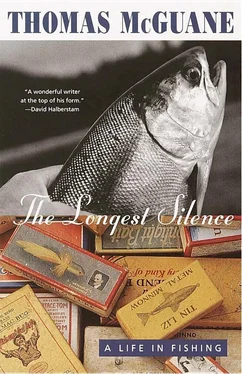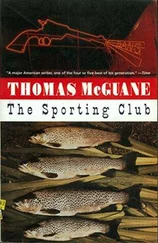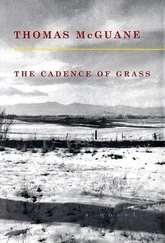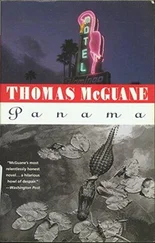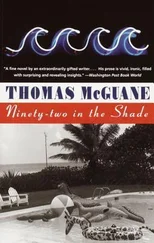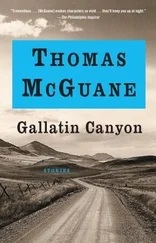I think we can work it out. But this great new rod is made of materials that are part of a rapidly evolving technology and thus might be obsolete by Thanksgiving. I could be given cause to worry that its modulus of elasticity may be trailing the next generation of rods. I’m actually capable of thinking about crap like that; I kind of like it. The other day, I put this soulless wand away and, instead, fished with that fine old bamboo I’ve had for several decades. By comparison, this beautiful wooden shaft with highly individualized handwork and matchless esthetics was a dog, and I was reminded that someone likened the classic action of a bamboo rod to a cow pulling its foot out of deep mud.
Gough Thomas, the English gun writer, warns against the vice of “polygunning,” which means using too many guns and becoming master of none. I could point out that this same malady afflicts anglers, but what’s the use? We’ll always have too many rods.
Returning to my topic: a trout fisherman can do it all with a nine foot for a six line. A nine foot for an eight-weight line will cover most of the rest, including bonefish and small tarpon. I’ve seen tarpon of more than 125 pounds landed on eight weights, also ideal for snook and redfish. For repetitive casting, as demanded in steelhead and salmon fishing, it’s as much as most of us want to cast all day long, and plenty of people use their six-weight rods for steelhead.
I know, nobody’s listening to this excellent advice. Is it because I have about twenty fly rods?
Let’s see what my excuses are. I have an eight-foot Garrison for a size-six line. I keep this and still use it because it is so full of fishing memories. It was owned for years in the middle of its life by my former brother-in-law; I had to buy it back and he did well in the transaction. I also keep it because I remember my consultations with the builder and the giddiness of those years when there were relatively so few of us fly-fishing.
I have a six-foot three-inch Bob Summers Midge because it reminds me of my first significant fly shop, Paul Young’s, where Bob originally did his beautiful work. Also, recalling the follies of A. J. McLane and Arnold Gingrich and Lee Wulff when they were promoting these impractical “flea rods,” it suggests that even great men are prone to foolishness.
I have a four-weight nine-foot Light Line Sage, which is the most exquisite use of graphite I’m familiar with in a spring creek rod. With this one I caught my best public water dry-fly trout, after forty-five years on the job: a twenty-five-and-a-half-inch male brown, on a size-20 Pale Morning Dun, from Silver Creek near Ketchum, Idaho. I’m convinced the rod kept me from breaking the 6X tippet and from suffering an avalanche of grief.
I have an eight-and-a-half foot Winston for a number-five line, a rod I’ve followed throughout its evolution of materials. This one is of IM6 graphite and in my view is the five-weight trout rod against which all others are measured, although the Scott of the same size is right in there. These are the best for the small freestone rivers of the kind that I often fish.
I have a seven-and-a-half foot bamboo rod for a five line built by John Long, a gift from a builder I’ve never met. A fine piece of work and an extremely pleasant small-stream rod.
I have a seven-and-a-half foot Payne, two-piece, for a five line because I always wanted a Payne and even named the hero of one of my novels after this maker. I consider Payne to be the finest cane rod builder of all time. When you pick this rod up you can tell everything you need to know; it’s startlingly good.
Now, the rod I discussed earlier: a nine-foot six-weight Loomis GLX, a tremendous fly rod designed by Steve Rajeff and otherwise a thoroughly impersonal artifact. The guides are single-footed; there is glitter thread in the windings; the reel seat is air weight spun nylon. It’s the fly rod as pure idea. It tracks perfectly, dampens perfectly; the action seems to progress through infinity without ever hitting bottom. You forget about the rod and think about the line. I don’t believe it weighs three ounces. I can fish big western rivers for ten-hour days and never want for another rod.
I have an eight-foot nine-inch Russ Peak Zenith for a seven line. Russ Peak was a genius who understood better than anyone what could be done with glass. He was the ne plus ultra rodmaker in the seventies, when I was fishing two hundred days a year, so there is sentimental value. By today’s standards it’s a deliberate number that requires the angler to recalibrate his timing somewhat. But once I’m actually fishing with it, usually on the Yellowstone in the fall, I quickly fall back into its rhythms. It is perfectly built.
I have an eight-foot nine-inch Winston cane rod, for a seven, goes best with a Wulff 7/8, that was built by the great Glenn Brackett and was a gift of the Winston Rod company. I enjoy fishing this rod enormously, for it is entirely in the spirit of the West Coast glory days in steelheading when Winston and Powell were kings. I can accept the extra weight of the rod because of the time between casts in steelheading. It is a great roll casting or single-handed Spey casting rod.
I just traded for a nine-foot two-piece Payne light salmon rod for an eight line, beautiful with a detachable fighting butt, ferrule plugs, case, and canvas overcase. It weighs the same as a thirteen-weight billfish rod. What will I do with it? I’m bound to come up with something.
The eight-weights and the age of excess: my Sage eight-foot nine, an outstanding, wind-penetrating bonefish rod, doesn’t seem much good for anything else I do. My Sage nine-foot for an eight-weight, the 890 RPL, as much of a classic as the old Fenwick FF85. My Loomis four-piece nine-foot for an eight, designed by Steve Rajeff and Mel Krieger, is an outstanding travel rod, the only rod I know of better in the multipiece than in the two-piece.
My faithful permit rod, a nine-foot for a ten-line Winston graphite, though somewhat sluggish by current standards, seems to absorb the vagaries of big, heavy permit flies better than stiffer rods. It’s a good all-around striped bass rod, too.
A nine-foot for eleven-weight Sage built for me as a gift by George Anderson. I use a twelve-weight line on this rod and it is a rod which, when used carefully is adequate for big tarpon. It won’t wear me out on active days the way the twelve does. It is simply built, no fighting grip, and full of happy memories. I couldn’t retire this rod, even though the twelves and thirteens are nicer once the fish is hooked.
Perhaps it would be wise to leave out my three Spey rods. I have good single-handed steelhead and salmon rods but I may never go back to them. The Spey rods just work too well. The English are not pleased that we call them “Spey rods” at all, in the conviction that “double-handed rods” is the correct form. All the English anglers I know feel this way and all are using American made rods. It perfectly symbolizes the relationship between the two nations.
I subject the reader to my inventory for two reasons. First, I myself love to read this sort of thing, sniffing around the author’s tackle room; and second, to suggest that what’s at work here has nothing to do with necessity but rather with the elaboration of the dream that is fishing.
MOST REELS are sold to the public by suggesting some unheard-of emergency involving a running fish and guaranteeing that this reel is the only available product capable of bringing the trophy to a standstill before it changes area codes. Right now, a large variety of magnificent reels is available to choose from. Most have one thing in common: they’re far better than they need to be. Reels evolve slowly: the ninety-year-old Vom Hofes are still among the best. I have a number of Pfleuger Medalists made in Ohio, and even in the most awful conditions they have never failed me. There were Japanese knockoffs of these reels and they’re great, too. Though built to appalling tolerances, they keep on ticking.
Читать дальше
